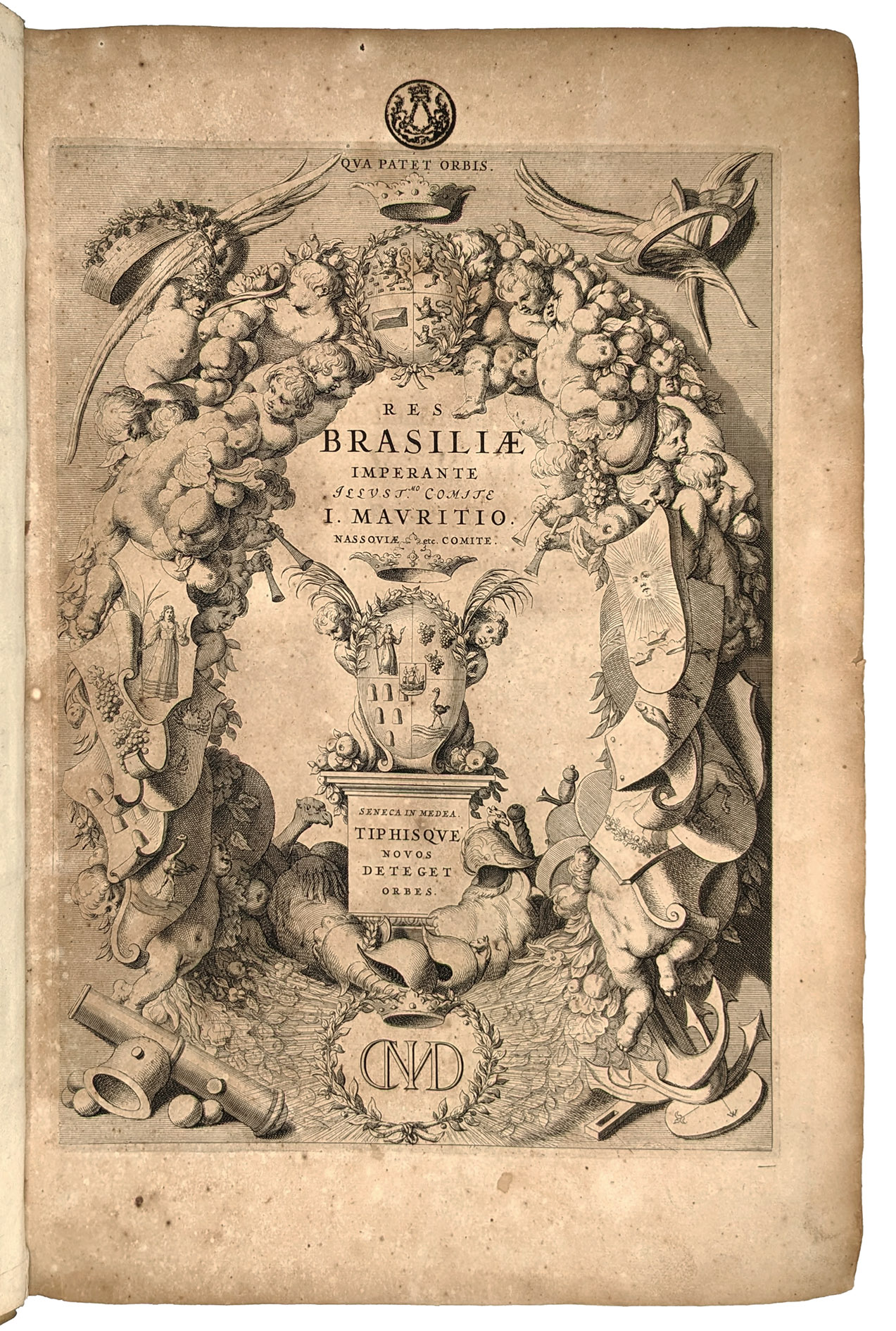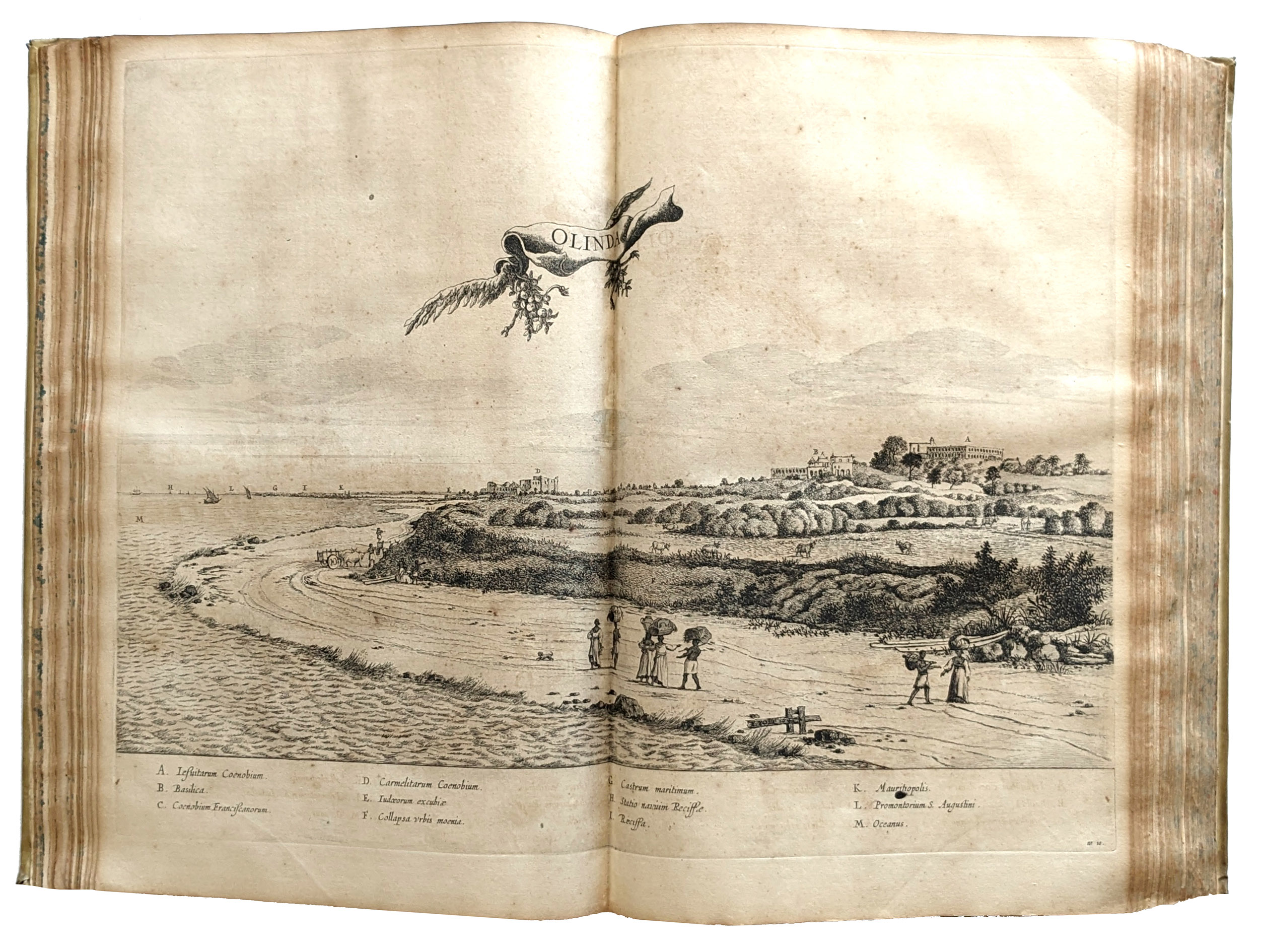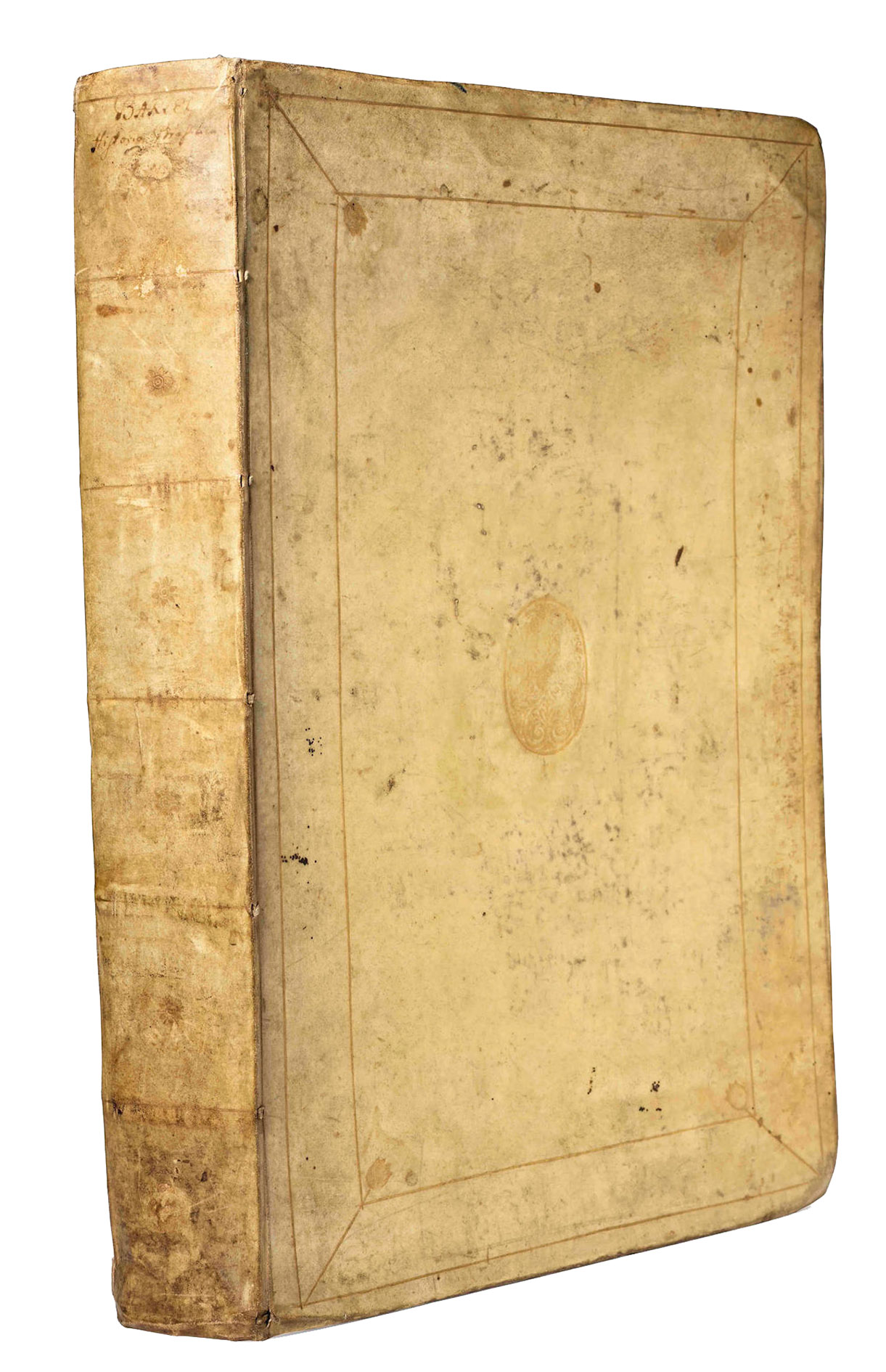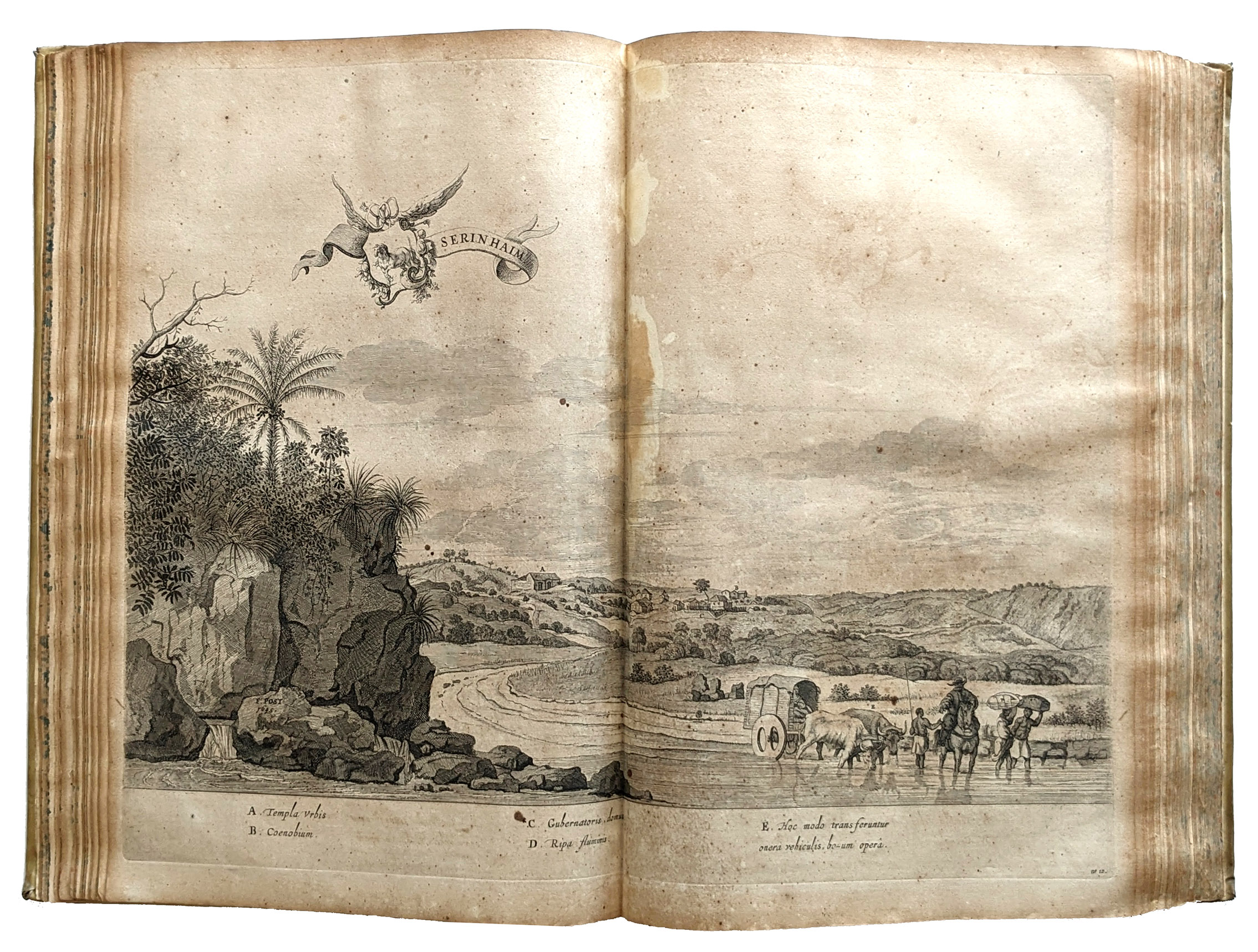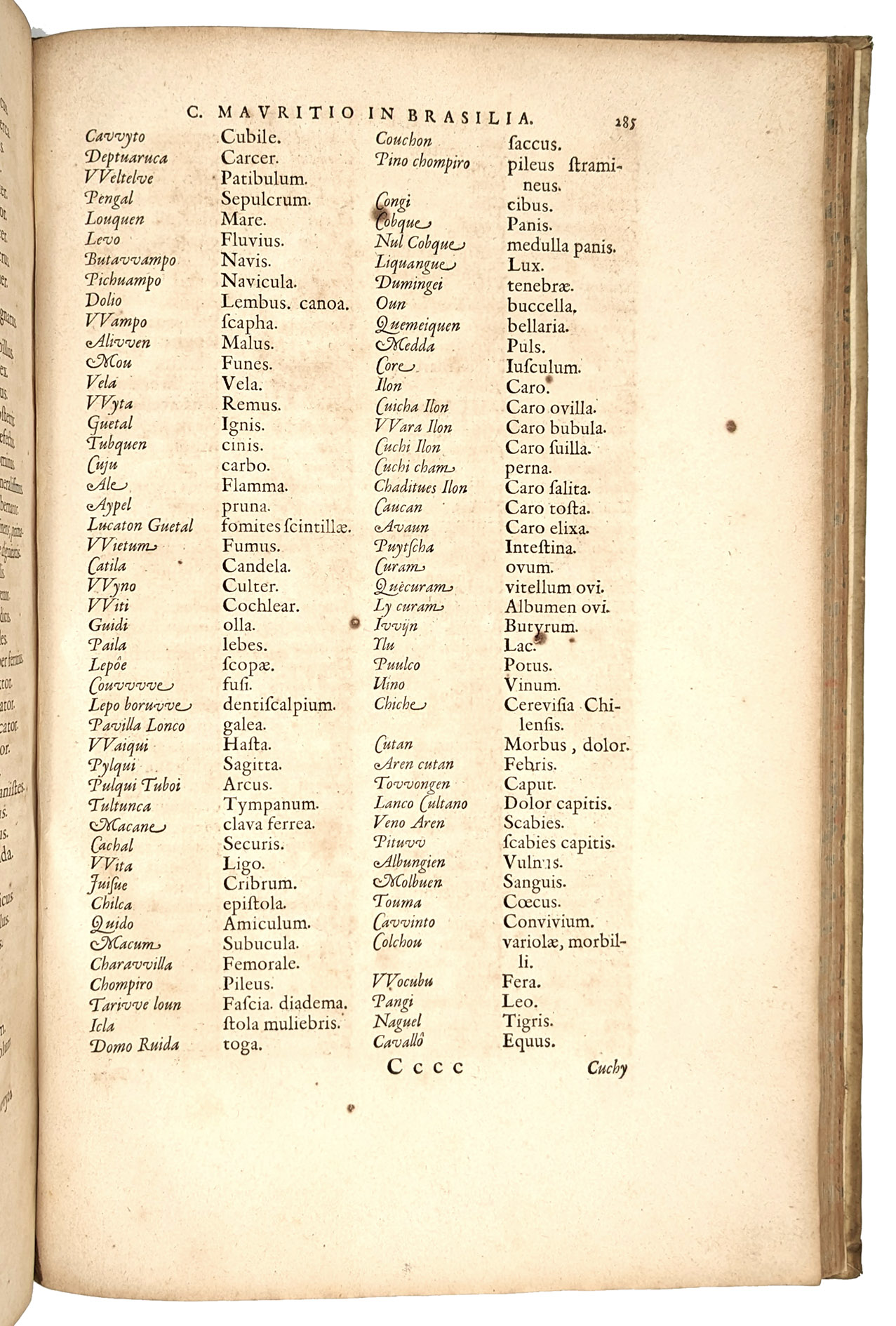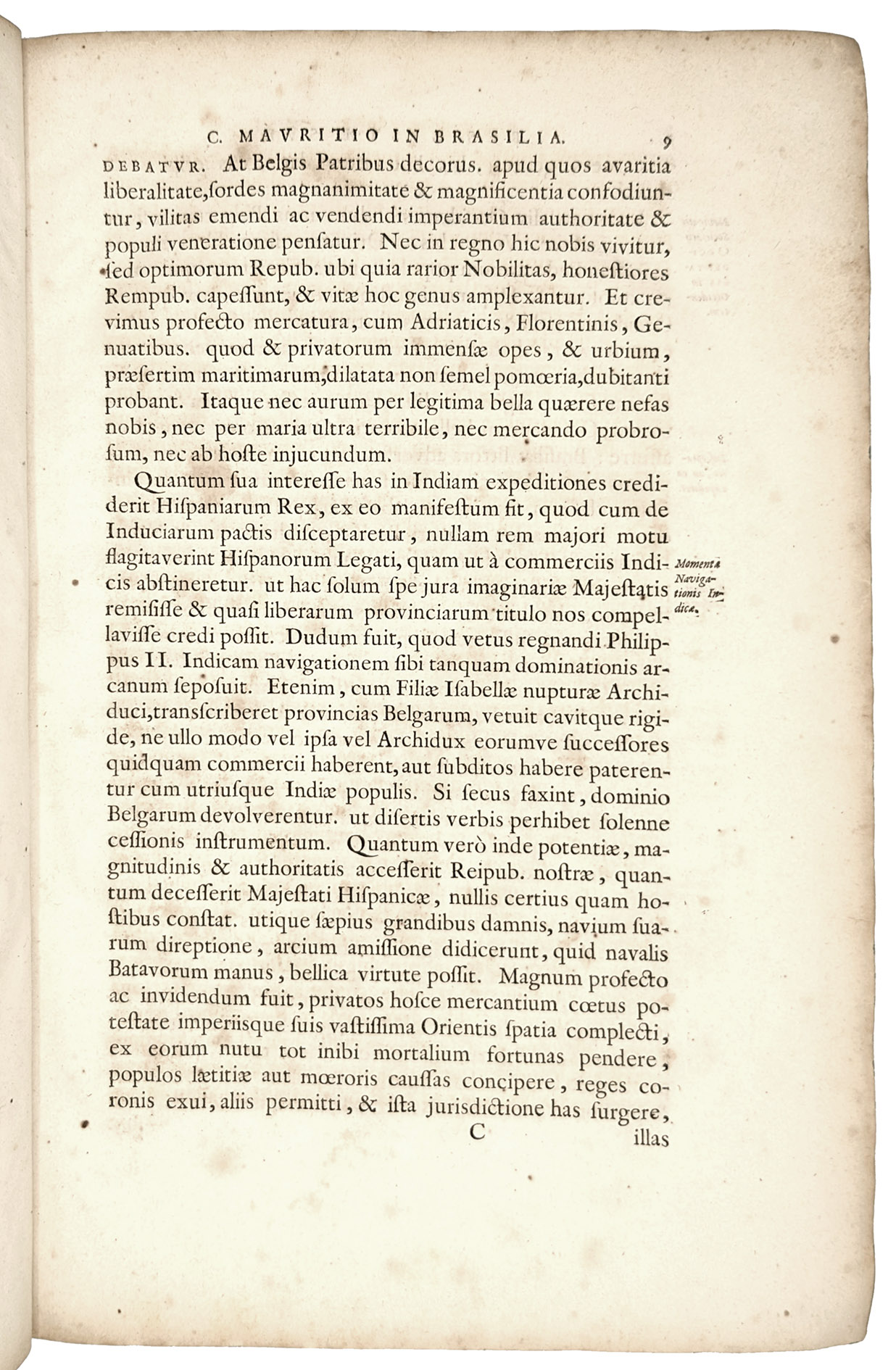BARLAEUS, Caspar.
Rerum per Octennium in Brasilia et alibi nuper gestarum.
Amsterdam, Joan Blaeu, 1647. Folio. With an engraved title-page, an engraved portrait of Johan Maurits van Nassau, 25 double-page engraved maps and plans, and 31 double-page engraved plates. Further with a woodcut printer's device on the title-page. Contemporary vellum, upper cover ruled in blind with blind-stamped floral vignette in center. [12, including title-page, frontispiece and portrait], 340, [8] pp.
€ 36,500
First edition, the most famous book published on Brazil of the 17th century, sumptuously illustrated with double page and folding maps and views of Brazilian ports and cities. All illustrations were inspired by Frans Post, who - together with Caspar Barlaeus - accompanied Johan Maurits van Nassau on his trip to Brazil. This is the folio edition, coveted by collectors over the small and far more common 8vo edition. "One of the most beautiful books on Brazil of this period" and of "inestimable documentary value" (Borba de Moraes).
Barlaeus (1584-1648), or Caspar van Baerle, was a poet, writer, and one of the great 17th century Dutch humanists. He was commissioned to write an account of the on the government of Maurits van Nassau, Governor-General of Dutch Brazil from 1637-1644, in Pernambuco by the Prince himself. The book is a significant account of influential however short-lived Dutch colonial empire in Brazil, considered by Sabin to be a "magnificent work" and a great rarity due to a fire that consumed much of Blaeu's stock. The maps and views were the main European reference source of the Brazilian landscape for 160 years.
"... Barlaeus interwove passages about Johan Maurits´s actions as governor with descriptions of the geography, the flora and fauna, the population and the sugar plantations in the colony. His history painted a picture of a colonial administration that endeavored to be fair to everyone. Johan Maurits and his fellow governors appeased the Portuguese and the other population groups by means of a carefully-weighed balance of military presence and measures aimed at promoting prosperity and cooperation. They maintained sufficient troops to suppress any rebellion that might threaten... They protected the Indians in the colony from slavery in another guise, placed them under the authority of their own village elders and recruited them as auxiliary forces by rewarding them appropriately. They made allies of savage, cannibal Indians from the outlying areas and tried to civilize them. By promoting economic recovery, Johan Maurits and his fellow administrators did the whole population, including the black slaves, a service. They stopped the extortion of plantation owners by local commanders and restored peace and order to rural areas. They protected the inhabitants against the Portuguese incursions from Bahia and against raids by marauding Maroons in southern Pernambuco. By resuming the import of slaves and by selling on credit they ensured that the worforces on the plantations grew and sugar production increased. They promoted regulated free trade between the colony and the Netherlands to replace the WIC monopoly. This created the opportunity to establish fair prices for Brazilian exports and European imports and encouraged trade with the home country... Barlaeus was consequently able to conclude his history with praise for the governor..." (Van den Boogaart, Ernst. "A Well-Governed Colony: Frans Posts Illustrations in Caspar Barlaeuss History of Dutch Brazil." The Rijksmuseum Bulletin 59, no. 3 (2011): 236-71, p.238-239).
The vellum binding is lightly soiled, paper repair to leaf 3V1, scattered browning and staining. Good copy of the sumptuously illustrated and most important history on the Dutch in Brazil. Alden 647.9; Borba de Moraes, p 78; Sabin 3408; STCN 852284292; cf. Van den Boogaart, Ernst. "A Well-Governed Colony: Frans Posts Illustrations in Caspar Barlaeuss History of Dutch Brazil." The Rijksmuseum Bulletin 59, no. 3 (2011): 236-71, p.238-239.
Related Subjects:
